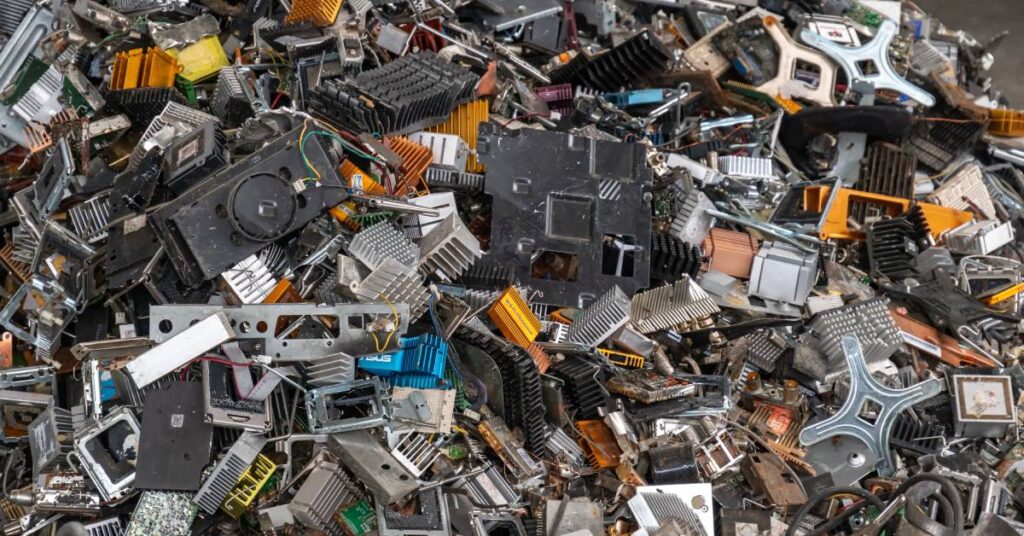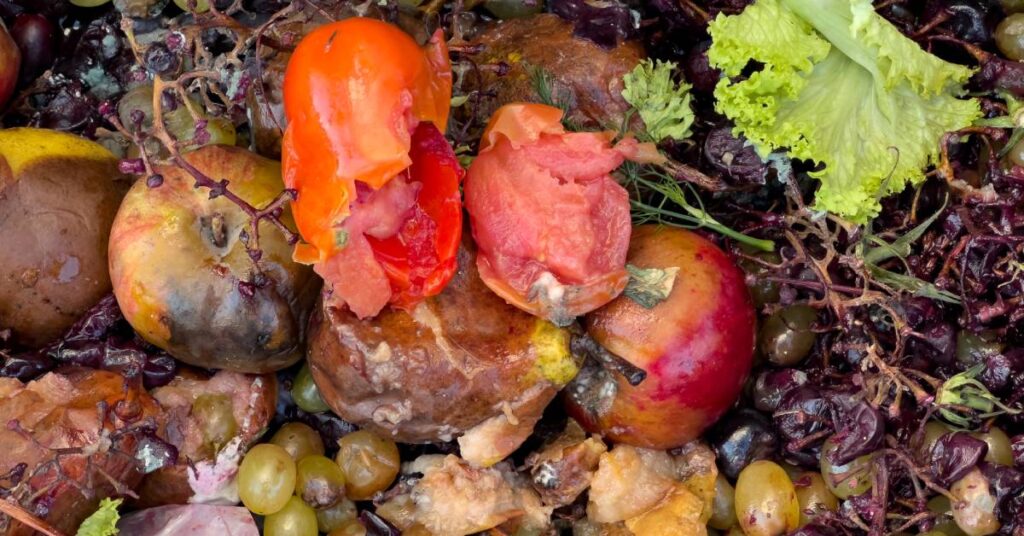Industrial waste is one of the largest contributors to environmental degradation. Waste from factories and manufacturing plants leads to pollution and resource depletion. For that reason, recycling industrial waste has become a key business waste management strategy. Let’s explore some innovative ways to recycle industrial waste and see how businesses can adapt these processes to their operations.
What Is Industrial Waste?
Industrial waste refers to the byproducts of manufacturing or industrial activities. These materials come in various forms, such as liquids, solids, or gases, and can originate from industries like textiles, chemicals, mining, and construction.
Several types of industrial waste exist. Hazardous wastes, like chemical residues and heavy metals, threaten the environment and public health due to their toxicity. Nonhazardous wastes, such as packaging materials or scrap wood, overflow landfills. Electronic waste (e-waste), including obsolete electronics, carries components like mercury and lead.
Poorly managed industrial waste can affect soil, air, and water. It can also amplify health concerns and damage local ecosystems.
Upcycling Waste Into Construction Materials
Businesses can create durable alternatives such as bricks, tiles, and cement additives by transforming byproducts like fly ash and slag. Fly ash, a residue from coal-burning plants, improves the strength and longevity of concrete. Similarly, slag, a byproduct of metal smelting, enhances the density of construction blocks. These materials undergo minimal processing and improve infrastructure projects, reducing reliance on nonrenewable resources.
Additionally, recycling plastic waste into roadbuilding materials is another way to use industrial byproducts. Workers can blend shredded plastic with asphalt to create resilient and cost-effective roads. It’s a win-win situation as infrastructure companies benefit from lower material expenses while addressing excessive plastic waste.
Industry Collaboration for Sustainable Projects
Recycling industrial byproducts thrives through partnerships. Manufacturers, construction firms, and waste-processing plants can develop standardized processes for integrating waste into building materials.
For example, a steel refinery might supply slag to local building companies instead of sending it to landfills. Expanding these efforts worldwide could alleviate landfill pressure while fostering innovation in construction practices.
Reclaiming Metals and Minerals

E-waste contains valuable metals like gold, silver, and copper. However, many companies discard old technology into landfills. Fortunately, advanced technologies, such as hydrometallurgy or pyrometallurgy, can separate these metals from electronic devices.
Specialized recycling plants dismantle devices like smartphones and circuit boards, extracting gold and other conductors. For example, companies can recover gold from obsolete electronics and refine it into high-quality manufacturing materials. This recovery process minimizes waste and decreases the reliance on raw metal extraction.
Mineral Recovery From Mining Waste
Mining operations generate large amounts of waste that still contain small quantities of useful minerals. Through processes like bioleaching, industries can extract metals using naturally occurring microorganisms.
Bacteria like Acidithiobacillus ferrooxidans break down mineral sulfides and release valuable ores such as copper or zinc. Companies can adopt bioleaching in mining operations to recover resources without disturbing the environment.
Solvent Recycling
Industries such as pharmaceuticals, automotive manufacturing, painting, and oil refining rely on solvents for their operations. Unfortunately, discarded solvents pollute land, water, and air, threatening ecosystems and human health. Luckily, solvent recycling can help!
Facilities recycle solvents through advanced techniques like filtration, distillation, and molecular sieving. These methods remove contaminants and restore the solvents to their original high-quality state. For instance, automotive manufacturers can use distillation to recycle washing solvents that clean engine parts.
Pharmaceutical companies employ multi-stage recovery systems to ensure solvent purity for drug production. These processes enable industries to minimize waste while maintaining operational efficiency.
Solvent recycling systems deliver measurable benefits across industries. Facilities that use them save costs on raw chemical purchases and reduce disposal expenses through closed-loop recovery systems. For example, a paint manufacturer can reduce its reliance on fresh solvents while maintaining product quality. Recycling solvents enables businesses to meet sustainability targets, reducing environmental impact.
Converting Waste to Energy
Transforming waste into renewable energy is another innovative way to recycle industrial waste. Industries frequently discard nonrecyclable materials, such as plastics and chemical sludge, into landfills. Waste-to-energy (WTE) technologies, however, convert these materials into electricity, heat, or biogas. This method addresses pollution concerns and provides industries with a cleaner energy source.
Different Waste-to-Energy Processes
Industries use techniques like combustion and anaerobic digestion to generate energy from waste. Combustion facilities burn industrial refuse, converting the heat into power for local grids or facilities.
Anaerobic digestion, an alternative method, employs microorganisms to break down organic waste into biogas. Food processors and manufacturers adopt this process to manage organic byproducts while fueling operations with renewable energy.
Technological Advances
Emerging innovations in WTE are introducing efficient, high-performance systems. Plasma gasification, for instance, converts waste into a clean, synthetic gas without combustion, eliminating harmful residues.
These developments increase potential energy output while reducing environmental risks. Governments and private enterprises can integrate these advancements into broader energy infrastructures, accelerating progress toward sustainable economies.
Bioremediation Using Microorganisms
Microorganisms such as bacteria, fungi, and algae help address industrial waste. These living organisms feed on contaminants in soil, water, or air, breaking them down into less harmful components.
For instance, bacteria like Pseudomonas thrive in oil-contaminated environments, breaking hydrocarbons into carbon dioxide and water. This method functions as a natural cleaner, replacing harsh chemical treatments that worsen environmental damage. Microbial processes handle contaminants without harming the surrounding ecosystem.
Industries rely on bioremediation to manage challenging waste problems. Oil refineries and shipping companies use oil-degrading bacteria to address pipeline leaks or spills at sea. Meanwhile, chemical factories apply fungal species to neutralize toxic residues in industrial water runoff, rendering it safe for reuse. These targeted solutions improve how industries manage specific waste types, lowering exposure to humans and wildlife.
Repurposing Food and Agricultural Byproducts
Food processing plants and agricultural operations generate high volumes of organic byproducts. Without intervention, these materials decompose in landfills, releasing methane, a potent greenhouse gas. Repurposing these byproducts prevents waste and creates valuable products from these materials.
Food producers can repurpose discarded elements like fruit peels, vegetable pulp, and seeds. Some companies transform citrus peels into essential oils and bio-cleaning agents, providing a sustainable alternative to traditional cleaning chemicals.
Vegetable pulp from juice production can become an ingredient for fiber-rich food products or snacks. Likewise, breweries can work with local farms to share spent grains, which boost livestock nutrition and feed efficiency.
Agricultural industries can repurpose corn husks, wheat chaff, and rice straw to create eco-friendly fertilizer alternatives. For example, farmers can transform rice husks into biochar, a soil additive that enriches agricultural fields and locks carbon into the ground.

Wrap-Up
Tackling industrial waste may seem challenging, but innovative solutions turn it into a gold mine of opportunities. Transforming byproducts into construction materials and reclaiming valuable resources showcases resourcefulness and sustainability. Overall, businesses can help protect our planet with better practices such as waste-to-energy projects, bioremediation, and solvent recycling.

